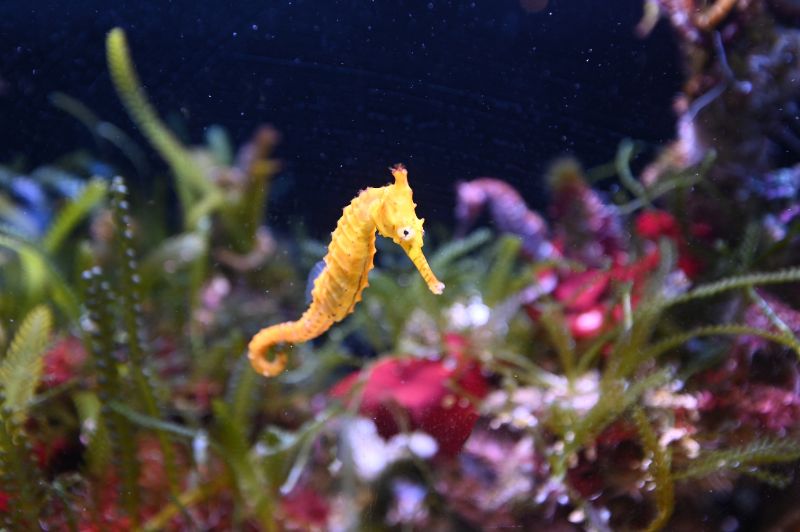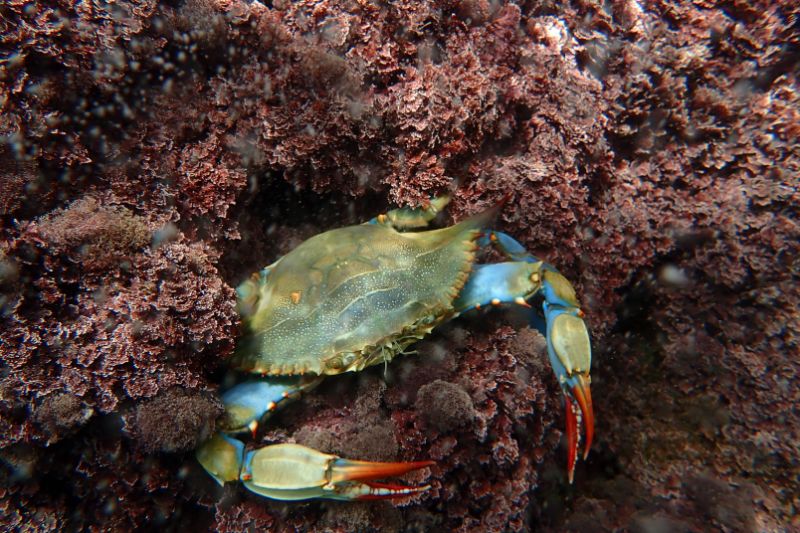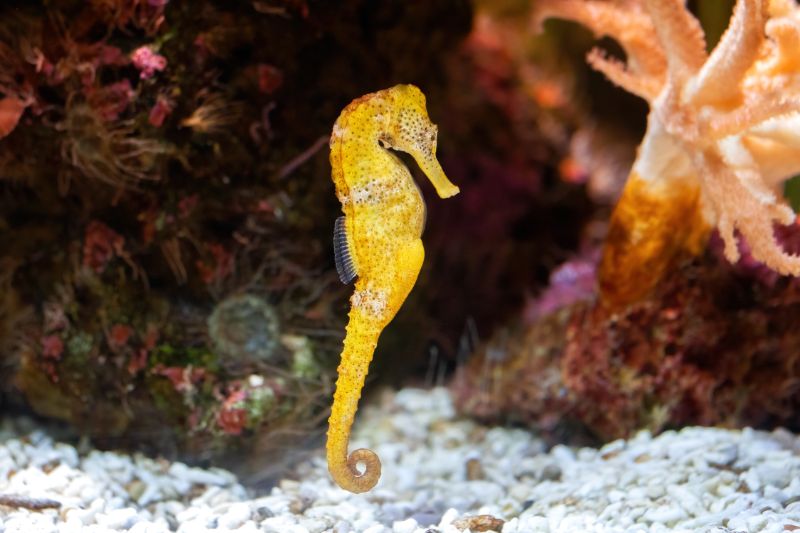One could hardly resist the allure of the captivating and intriguing world of seahorses. Among the ocean’s most unique inhabitants, these bony fish, totaling about 33 species globally, take center stage.
Sneak Peek into the Seahorse Habitat

Seahorses inhabit shallow waters near vibrant algae. Their showpiece? The miraculous ability to mimic their surroundings’ colors. When it’s mating season, the desire to woo a partner turns them into chameleons, altering their hues at will.
The Astonishing Seahorse Life-cycle

In the world of these aquatic equines, traditional roles are reversed. Our dashing male seahorses don’t just take in eggs from their female counterparts but also deliver lively offspring, a gestating act that usually spans approximately three weeks.
Feeding Habits of Seahorses
Armed with zero dental formula, these creatures gulp down their food whole. Regular items on their menu include crustaceans, larva fish, and plankton.
See Related: The Enchanting World of Freshwater Seahorses: Discover the Hidden Gems of the Sea
Predators to Watch out for

The seahorse’s excellent camouflage shields it from most predators. However, crabs often invade the peaceful seahorse habitat, bringing aggression and tension.
Challenges in Seahorse’s Livelihood
Unfortunately, seahorses face diminishing numbers. Aquatic medicine in the Asian markets heavily features seahorses as ingredients. They also reel in high demand as exquisite additions to aquariums, further aggravating their declining population.
Creating a Seahorse Habitat in an Aquarium

Emulating a seahorse habitat in an aquarium is an exciting albeit challenging venture. Adopting tank-bred seahorses could be an easier option since they are disease-free and accustomed to a diet of frozen food. Sourcing seahorses from the wild for aquariums may lead to malnutrition and disease propagation.
- Ensure your tank is spacious and houses non-threatening fish.
- Continuously control water temperature and quality.
- Evaluate the natural seahorse habitat and replicate it as closely as possible for the most successful setup.
Maintaining and recreating seahorse habitats can be an enriching experience with the right knowledge at hand. Get to know them better, and dive into an underwater adventure with these stunning creatures, the seahorses.
Related Resources